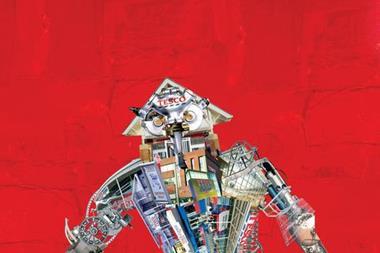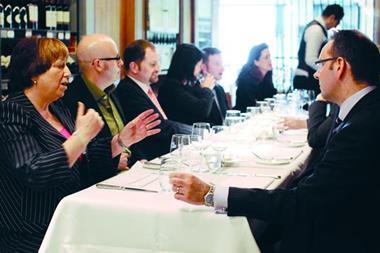What’s in a name? Well, almost everything during an economic downturn, when customers tend to flock to the brands they trust the most. Exclusive to Insurance Times, Brand Finance – an independent brand valuation company – has provided feedback on which general insurers have the best brands and why. Here’s what the company’s chief executive, David Haigh, had to say:
2009 has been a bad year for the value of insurance brands. In the fall-out from the banking crisis all financial services brands have lost popularity and the end result has been a significant reduction in enterprise value and brand value.
Underlying demand for all financial products has dropped, although there is a significant difference between product categories and geographies. Demand for general insurance products has held up much better than demand for life, savings and asset management products.
Consequently, general insurance and composite insurance brands have done better than pure-play life insurance brands. Developing markets continue to grow while the developed world stagnates.
It is noteworthy that while enterprise values (the market value of shareholder equity and long-term debt combined) have dropped alarmingly, due to the flight of investors to cash, brand values have held up surprisingly well. To some observers this seems counter-intuitive. There is a belief that brands are weak, intangible assets which wilt when market conditions turn bad.
Our experience is the reverse, because in a time of uncertainty customers flock to those brands they still trust. There has been a clear move towards brands offering good value for money. For example, the Co-operative, Tesco and Walmart are all having a good financial crisis as customers turn to their banking, insurance and other financial services products.
Most brand values have dropped, with some notable exceptions. As in 2008 the most valuable brand in the insurance sector is AXA, down from $15.2bn (£10bn) to $10.2bn (see above). The AXA brand has developed over the last decade to become a dominant presence worldwide, in the same way that HSBC, Visa, Vodafone and Coke have in their respective sectors.
Every aspect of AXA’s branding has been well handled. Its brand rating has risen from A in 2008 to A+ in 2009. The name is short, memorable, and easy to pronounce and register worldwide. It has become ubiquitous by extensive use of advertising and sponsorship on a global scale. Like the HSBC brand it has also been introduced in an intelligent and measured way.
When AXA acquires a new brand it carefully evaluates the power of the existing brand before changing it, in stages, to ensure a minimum loss of customers. For example, the PPP brand was a strong player in the United Kingdom PMI market which has been sensitively transitioned into AXA Healthcare brand over a 10-year period, to avoid brand equity erosion and customer defection.
Bad timing for Aviva
Aviva is the obvious brand to compare with AXA. In many ways it appears that Aviva is following the AXA lead by taking a disparate collection of local brands and transitioning them to one monolithic brand. This has been done effectively over the last two to three years and its brand rating remains stable at A.
However, Aviva has been unfortunate with the timing of its brand transition in relation to the financial crisis. At a time when customers are flocking to brands they know and trust, Aviva is phasing out the Norwich Union brand at a substantial cost.
A high profile re-branding programme and advertising campaign would, under normal circumstances, have been applauded in the endeavour to create a global insurance brand to challenge AXA’s dominance.
However, in the current market Aviva has been criticised for rocking the boat with customers and spending large amounts of cash to effect the transition.
The logic is impeccable but the timing has been unfortunate. However, its brand value has dropped less than any of the other major brands ($6.6bn to $6.1bn). Time will tell whether fears of increased customer lapse rates, caused by the brand transition, prove accurate.
AIG’s fall from grace
The insurance brand which has suffered most in the last year is the once mighty AIG (down from $15.1bn to $5.1bn).
Sadly, AIG was brought low by unfortunate policies written against securitised sub-prime mortgage derivatives in the USA rather than by a fundamental collapse of its historic core business of everyday insurance.
It was financial engineering that brought AIG to its knees rather than the loss of customer confidence in its products and services.
As such, the intervention of the US government has stabilised the ship. As a result its brand rating remains stable at A. Sadly for AIG it faces the ignominy of surrendering its iconic shirt sponsorship of Manchester United.
The company’s enterprise value has collapsed from $117bn to $26bn but the rump that remains could well see a stabilisation and revival built on strong brand heritage in Asia and elsewhere.
THE REST OF THE PACK
Allianz, Generali, ING and Zurich have all performed relatively well in the financial crisis. Allianz’s brand rating has dropped slightly while ING’s has risen. Generali and Zurich have remained stable.
The real interest in the table of top insurance brands is the emergence of the Chinese brands Ping Ang (A) and China Life (A+). At present these brands are found only in mainland China and have invested little in brand-building either inside or outside the country. Their brand values represent very low percentages of enterprise value (respectively 6% and 2% of EV).
As in many other sectors such as mobile phones, cars and banking, the next decade will see an emergence of truly global brands from China. No one doubts their ability to produce high-quality products and services at low cost. The question is whether they will be able to transfer their domestic brands to an international stage, or whether they will have to acquire struggling developed world brands as their passport to customer trust and preference.
Postscript
Methodology
The income method Brand Finance used to value insurance brands involves forecasting future revenues of the branded business. It then estimates what would have to be paid in royalties if the entity did not own its trademarks and associated marketing intangible assets and was obliged to license them from a third party brand owner. Each brand is given a brand rating (equivalent to a credit rating) on a scale from AAA-D. The brand rating is used to calibrate the royalty rate, the discount rate and other key variables used in the brand valuation. Brand Finance says this “royalty relief” methodology is used because it is based on commercial reality, is transparent and can be compared with real transactions between arms-length parties in the market.
Hosted by comedian and actor Tom Allen, 34 Gold, 23 Silver and 22 Bronze awards were handed out across an amazing 34 categories recognising brilliance and innovation right across the breadth of UK general insurance.













































No comments yet